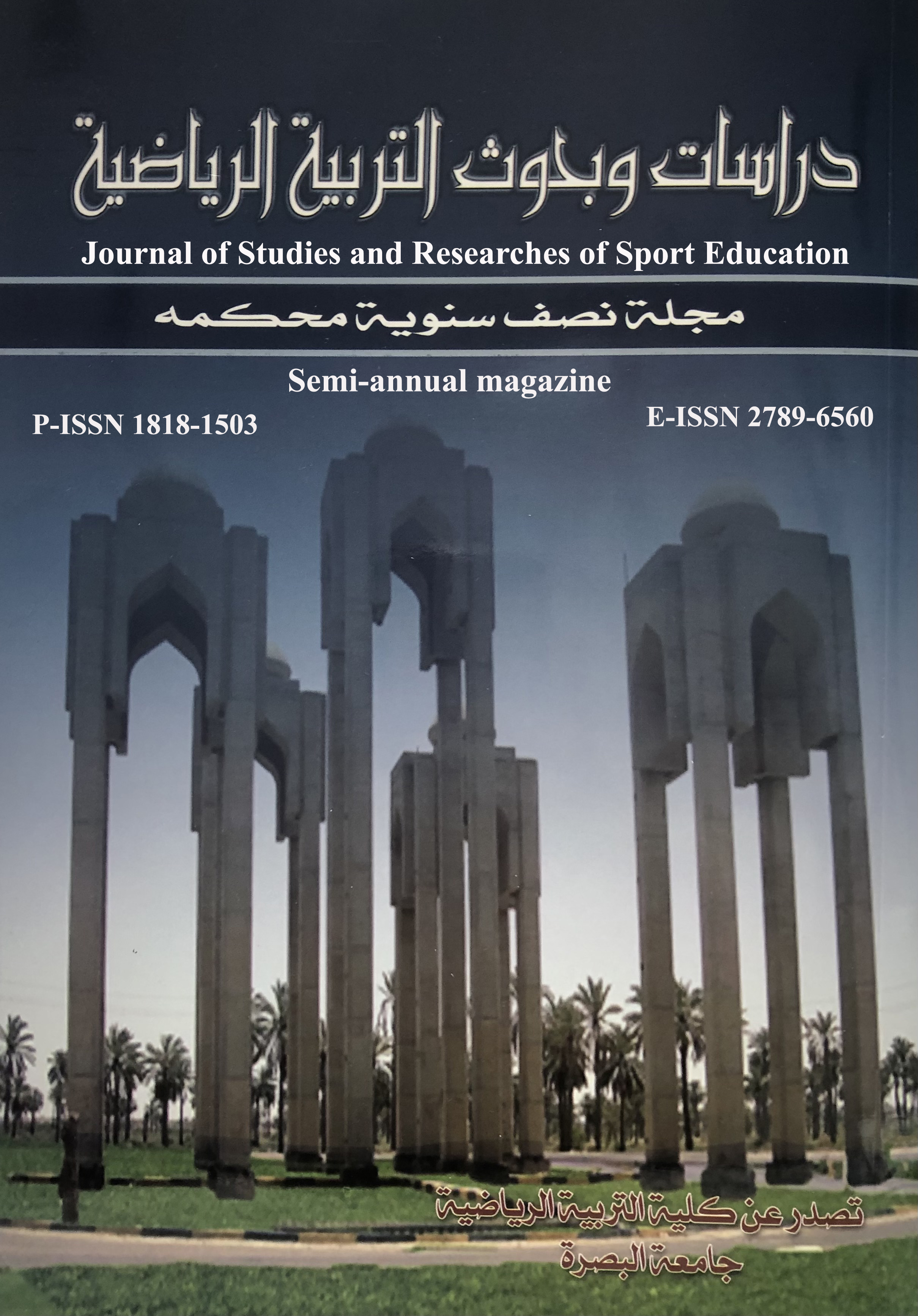BioKinematic Analysis of Tippelt Motion on Parallel Barsin gymnastics
محتوى المقالة الرئيسي
الملخص
The purpose of this study was to provide an appropriate model for Tippelt movement performance and Tippelt movement training data by quantitative analysis of the kinematic variables of three gymnasts from the Iraqi national gymnastics team. Results of analysis of kinematic differences between the three gymnasts.
- The joints of the shoulders that extended as far as possible affected the movement of Tippeltin the lower swing. The process of reaching the body mass center to the maximum speed at the point of flection and the body moves from the vertical phase to the forward direction, making movement control as possible.
- The high swing movement made the air stable and made the control of the body quickly move to the anterior direction by extending the shoulder and hip joints to reverse the direction.
- That fly up and erect the body quickly and ease the angle of the hip joint on the high flight. When the motion was performed with an inverse rotation force making the movement stable.
As a result of this study, it appears that sudden drop and maximum shoulder joint extended is important when performing Tippelt motion in parallel bars. The maximum hip flexion at the starting point of the ascending swing, the sudden extended to the opposite direction of the shoulder and hip joints when leaving the parallel bars, the control of the body moving to the forward direction, and the reduction of the angle of the hip joint in the flight phase is important
تفاصيل المقالة

هذا العمل مرخص بموجب Creative Commons Attribution-NonCommercial 4.0 International License.
المراجع
International Symposium on Biomechanics in Sports (pp. 8-11). Cáceres: University Code of Points of Men’s Artistic Gymnastics, (M.A.G) 2013-2016,International Federation of Gymnastics (F.I.G).
Smolefski, V.M, &Gaverdofski, U.K. (1999). Sportivnaiagimnastika (Artistic Gymnastics). Kiev: OlimpiskaiaLiteratyra.
Prassas, S., Kwon, Y.H. & Sands,W.A. (2006). Biomechanical research in artisitc gymnastics: a review. Sports Biomechanics, 5(2), 261-291.
Sands, W. A., & McNeal, J. R. (2002). Some guidelines on the transition from the old horse to the new table. Technique, 22, 22-23.
Burgess, R., &Noffal, G. (2002). Kinematic analysis of the back salto take-off in a tumbling series: advanced vs. beginner techniques. In K. Gianikellis (ed.), Proceedings of the XX of Extramadura.
Hiley, M. J., & Yeadon, M. R. (2003). The margin for error when releasing the high bar for dismounts. Journal of Biomechanics, 36, 313-319.
Gervais, P. & Dunn, J. (2003). The double back salto dismount from the parallel bars. Sports Biomechanics, 2, 85-101.
Hatze, H. (1974) "The Meaning of the Term Biomechanics", Journal of Biomechanics. 7. p 189-190.
Joshi, H,C, et. al. (2014) “The Relationship of the Selected Kinematic Variables with the Performance of Cast to Upper Arm Hang on Parallel Bars in Men’s Artistic Gymnastics”, International Journal of Sports Sciences and Fitness 4(2). Page 166 to 176.
Singh, D., Singh, V.K., Singh, M.S. (2011) “Relationship of Selected Kinematic Variables with the Performance of Flick in Hockey”, ShodhSangan International Journal I(1). Page 44 to 46.
Khalil, K. (1986) “Effect of Approaches and Take-Off on the Vertical Jumps in Vollyball”, Snipes Journal. 9(1). Page 1 to 7.
Hay,J. G. (1984) “Sports Biomechanics: a Study Report”, Journal of Sports Sciences -2.
Gymnastics Terminology OrthopaedicStionOrthopaedicStion (OrthoPT). American Physical Therapy Association (APTA). p35.
FIG, (2017). FédérationInternationale de Gymnastique-Artistic, Men's Artistic Gymnastics, code of point. parallel bars.

 IASJ
IASJ CC-BY-4.0
CC-BY-4.0 turnitin
turnitin ISSN
ISSN DOAJ
DOAJ Crossref
Crossref GoogleScholar
GoogleScholar Orcid
Orcid